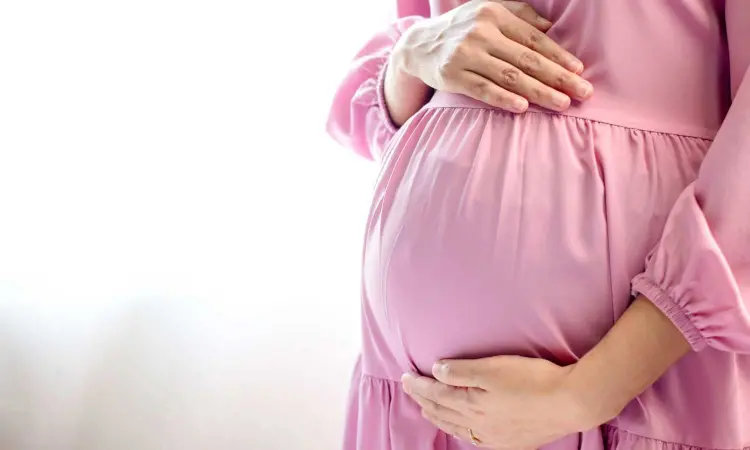- Home
- Medical news & Guidelines
- Anesthesiology
- Cardiology and CTVS
- Critical Care
- Dentistry
- Dermatology
- Diabetes and Endocrinology
- ENT
- Gastroenterology
- Medicine
- Nephrology
- Neurology
- Obstretics-Gynaecology
- Oncology
- Ophthalmology
- Orthopaedics
- Pediatrics-Neonatology
- Psychiatry
- Pulmonology
- Radiology
- Surgery
- Urology
- Laboratory Medicine
- Diet
- Nursing
- Paramedical
- Physiotherapy
- Health news
- Fact Check
- Bone Health Fact Check
- Brain Health Fact Check
- Cancer Related Fact Check
- Child Care Fact Check
- Dental and oral health fact check
- Diabetes and metabolic health fact check
- Diet and Nutrition Fact Check
- Eye and ENT Care Fact Check
- Fitness fact check
- Gut health fact check
- Heart health fact check
- Kidney health fact check
- Medical education fact check
- Men's health fact check
- Respiratory fact check
- Skin and hair care fact check
- Vaccine and Immunization fact check
- Women's health fact check
- AYUSH
- State News
- Andaman and Nicobar Islands
- Andhra Pradesh
- Arunachal Pradesh
- Assam
- Bihar
- Chandigarh
- Chattisgarh
- Dadra and Nagar Haveli
- Daman and Diu
- Delhi
- Goa
- Gujarat
- Haryana
- Himachal Pradesh
- Jammu & Kashmir
- Jharkhand
- Karnataka
- Kerala
- Ladakh
- Lakshadweep
- Madhya Pradesh
- Maharashtra
- Manipur
- Meghalaya
- Mizoram
- Nagaland
- Odisha
- Puducherry
- Punjab
- Rajasthan
- Sikkim
- Tamil Nadu
- Telangana
- Tripura
- Uttar Pradesh
- Uttrakhand
- West Bengal
- Medical Education
- Industry
Exposure to phthalates found in many household products can lower women's ability to conceive

USA: A recent study published in Environmental Health Perspectives has revealed a link between exposure to phthalates and a lower probability of getting pregnant, but not pregnancy loss. Phthalates are a group of plasticizing and solvent chemicals found in many household products such as shampoo, makeup, vinyl flooring, toys and medical devices.
The study also noted an association between preconception exposure to phthalates and changes in women's reproductive hormones, as well as increased inflammation and oxidative stress.
"Phthalates are ubiquitous endocrine disruptors and we're exposed to them every day," says lead author Carrie Nobles, assistant professor of environmental health sciences in the School of Public Health and Health Sciences.
People are exposed primarily by ingesting food and liquid that has come in contact with products containing the chemicals, according to a Centers for Disease Control and Prevention fact sheet.
Nobles and team analyzed data from a "unique cohort" of women in the preconception time-to-pregnancy study known as EAGeR (Effects of Aspirin in Gestation and Reproduction), which evaluated the effect of low-dose aspirin on live-birth rates.
The study includes detailed information on 1,228 participants during six menstrual cycles when they are attempting to get pregnant.
The women who became pregnant were followed through pregnancy.
"We were able to look at some environmental exposures like phthalates and how that relates to how long it takes to get pregnant. There was detailed data for each menstrual cycle, so we had a good handle on the date of ovulation and the timing of pregnancy when that happened," Nobles says.
The body breaks down phthalates into metabolites that are excreted in urine and can be analyzed.
The researchers measured 20 phthalate metabolites in urine samples taken when the participants enrolled in the study.
"We found there were three parent compounds that seem to be most strongly associated with taking longer to get pregnant, although we saw a general trend toward it taking longer to get pregnant across the phthalates we looked at," Nobles says.
"As exposure got higher, we saw more and more of an effect."
The researchers also looked at a global marker of inflammation, C-reactive protein, and found the women who had higher levels of phthalates exposure also had higher levels of inflammation and oxidative stress, which can lead to organ and tissue damage and ultimately to disease.
In addition, women who showed higher levels of phthalates had lower estradiol and higher follicle-stimulating hormone across the menstrual cycle, which play an important role in ovulation and the early establishment of pregnancy.
"This profile -- estradiol staying low and follicle-stimulating hormone staying high -- is actually something that we see in women who have ovarian insufficiency, which can happen with age as well as due to some other factors," Nobles says.
"Ovulation just isn't happening as well as it used to."
While women can check consumer product labels and look for phthalate-free options, the ubiquitous nature of the chemicals makes it difficult for an individual to control their exposure.
In Europe, certain phthalates are banned or severely restricted in their use, but the U.S. has no formal prohibitions.
Nobles says the research findings add to the evidence that phthalate exposures harm women's reproductive health and can be used to help inform policymaking.
"Maybe we want to think differently about our regulatory system and how we identify important exposures that are having adverse effects on whether people can get pregnant and have a healthy pregnancy," Nobles says.
Reference:
Carrie J. Nobles, Pauline Mendola, Keewan Kim, Anna Z. Pollack, Sunni L. Mumford, Neil J. Perkins, Robert M. Silver, Enrique F. Schisterman. Preconception Phthalate Exposure and Women’s Reproductive Health: Pregnancy, Pregnancy Loss, and Underlying Mechanisms. Environmental Health Perspectives, 2023; 131 (12) DOI: 10.1289/EHP12287
Dr Kamal Kant Kohli-MBBS, DTCD- a chest specialist with more than 30 years of practice and a flair for writing clinical articles, Dr Kamal Kant Kohli joined Medical Dialogues as a Chief Editor of Medical News. Besides writing articles, as an editor, he proofreads and verifies all the medical content published on Medical Dialogues including those coming from journals, studies,medical conferences,guidelines etc. Email: drkohli@medicaldialogues.in. Contact no. 011-43720751


